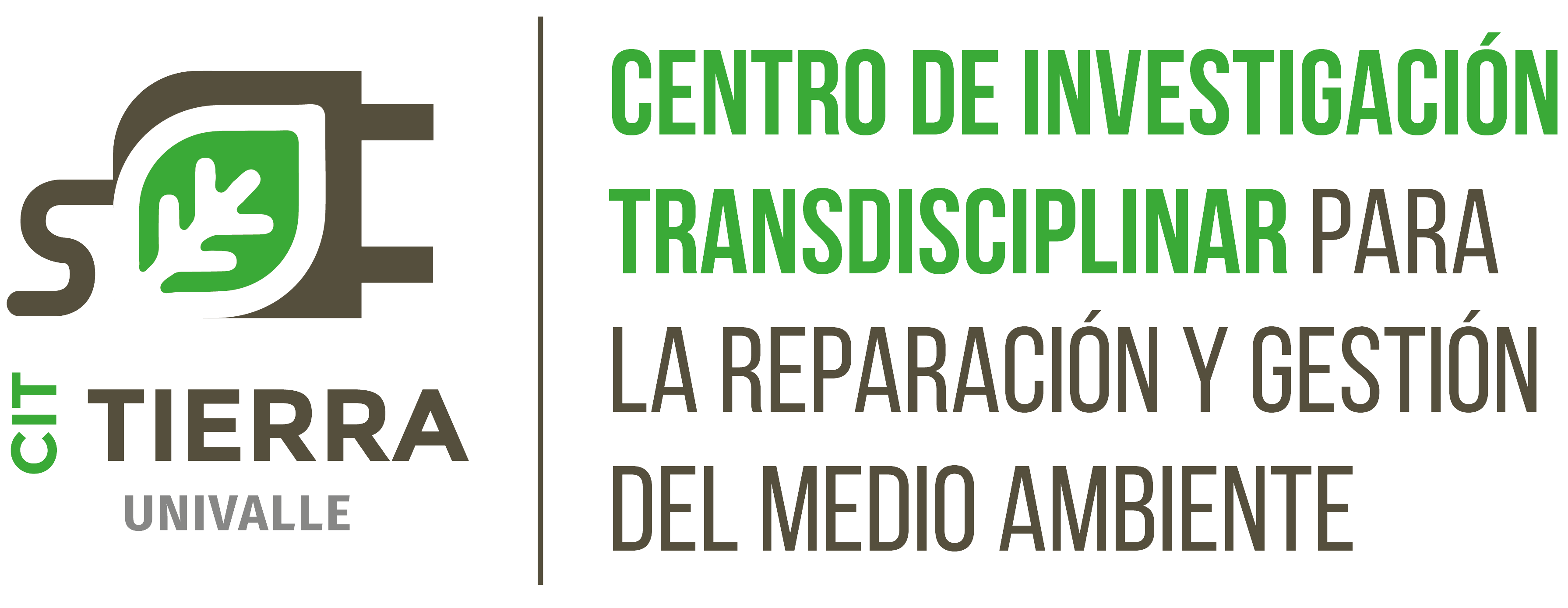Microbots y nanobots para el tratamiento de tumores cancerígenos
DOI:
https://doi.org/10.52428/20758944.v18i53.249Palabras clave:
Microbots, Nanobots, Cáncer, Administración de fármacosResumen
El uso de nano y microbots como tratamiento para tumores cancerígenos, tuvo avances acelerados durante los últimos años, debido a esto se consideró pertinente realizar esta revisión documental. Se llevó a cabo una búsqueda exhaustiva del avance de su aplicación actual, su funcionamiento y las ventajas y desventajas de su utilización. Varios modelos nano y microbots están inspirados en bacterias y otros organismos vivos, por sus propiedades en el tratamiento del cáncer. Por su parte, las nanomedicinas tienen ventajas en comparación con la administración convencional de fármacos, la combinación de estos conceptos da como resultado, un tratamiento de tumores cancerígenos más efectivo. Actualmente los desafíos a los que se enfrentan los nano y microbots son: sobrevivir, por ejemplo, al sistema inmunológico; localizar al tumor y ser ubicados por operadores humanos, realizar la operación específica de liberación de fármacos y ser eliminados del cuerpo una vez completada su misión. En la evolución de los micro y nanobots, cada vez existen modelos más eficientes y esto puede traducirse en grandes beneficios, siendo el principal la reducción de efectos secundarios, debido al sistema de liberación precisa del fármaco.
Descargas
Citas
Aillon, K. L., Xie, Y., El-Gendy, N., Berkland, C. J., & Forrest, M. L. (2009). Effects of nanomaterial physicochemical properties on in vivo toxicity. Advanced Drug Delivery Reviews, 61(6), 457–466. doi: https://doi.org/10.1016/j.addr.2009.03.010 DOI: https://doi.org/10.1016/j.addr.2009.03.010
Akhter, M. H., & Nomani, M. S. (2019). Bio-Inspired nanomedicine an emerging trend for drug targeting into cancer cells. Pharma focus Asia. Recuperado de: https://www.pharmafocusasia.com/articles/bio-inspired-nanomedicine-an-emerging-trend-for-drug-targeting-into-cancer-cells
Akin, D., Sturgis, J., Ragheb, K., Sherman, D., Burkholder, K., Robinson, J. P., Bhunia, A. K., Mohammed, S., & Bashir, R. (2007). Bacteria-mediated delivery of nanoparticles and cargo into cells. Nature Nanotechnology, 2(7), 441–449. doi: https://doi.org/10.1038/nnano.2007.149
Bagalkot, V., Zhang, L., Levy-Nissenbaum, E., Jon, S., Kantoff, P. W., Langer, R., & Farokhzad, O. C. (2007). Quantum dot−aptamer conjugates for synchronous cancer imaging, therapy, and sensing of drug delivery based on bi-fluorescence resonance energy transfer. Nano Letters, 7(10), 3065–3070. doi: https://doi.org/10.1021/nl071546n
Bar-Cohen, Y. (2005). Biomimetics: biologically inspired technology. II ECCOMAS THEMATIC CONFERENCE ON SMART STRUCTURES AND MATERIALS. C. A. Mota Soares et all. (Eds.) Lisbon. Portugal. July 18-21.
Behkam, B., & Sitti, M. (2008). Effect of quantity and configuration of attached bacteria on bacterial propulsion of microbeads. Applied Physics Letters, 93(22), 223901. doi: https://doi.org/10.1063/1.3040318
Champion, J. A., Katare, Y. K., & Mitragotri, S. (2007). Particle shape: A new design parameter for micro- and nanoscale drug delivery carriers. Journal of Controlled Release, 121(1–2), 3–9. https://doi.org/10.1016/j.jconrel.2007.03.022
Chen, Y., Kosmas, P., Anwar, P. S., & Huang, L. (2015). A touch-communication framework for drug delivery based on a transient microbot system. IEEE transactions on nanobioscience, 14(4), 397-408.
Cunha, D., Ben Yahia, M., Hall, S., Miller, S. R., Chevreau, H., Elkaïm, E., Maurin, G., Horcajada, P., & Serre, C. (2013). Rationale of drug encapsulation and release from biocompatible porous metal–Organic frameworks. Chemistry of Materials, 25(14), 2767–2776. https://doi.org/10.1021/cm400798p
Debbage, P., & Jaschke, W. (2008). Molecular imaging with nanoparticles: giant roles for dwarf actors. Histochemistry and Cell Biology, 130(5), 845–875. doi: https://doi.org/10.1007/s00418-008-0511-y
Diller, E. & Sitti, M. (2011). Micro-Scale mobile robotics. Foundations and Trends in Robotics, 2(3), 143-259. doi: https://doi.org/10.1561/2300000023
Dolev, S., Narayanan, R. P., & Rosenblit, M. (2019). Design of nanorobots for exposing cancer cells. Nanotechnology, 30(31), 315501. doi: https://doi.org/10.1088/1361-6528/ab1770
Dutta, D., & Sailapu, S. K. (2020). Biomedical applications of nanobots. In Intelligent Nanomaterials for Drug Delivery Applications (pp. 179-195). Elsevier. doi: https://doi.org/10.1016/B978-0-12-817830-0.00010-2
Felfoul, O., Mohammadi, M., Taherkhani, S., de Lanauze, D., Zhong Xu, Y., Loghin, D., Essa, S., Jancik, S., Houle, D., Lafleur, M., Gaboury, L., Tabrizian, M., Kaou, N., Atkin, M., Vuong, T., Batist, G., Beauchemin, N., Radzioch, D., & Martel, S. (2016). Magneto-aerotactic bacteria deliver drug-containing nanoliposomes to tumour hypoxic regions. Nature Nanotechnology, 11(11), 941–947. doi: https://doi.org/10.1038/nnano.2016.137
Felgner, S., Kocijancic, D., Frahm, M., & Weiss, S. (2016). Bacteria in Cancer Therapy: Renaissance of an Old Concept. International Journal of Microbiology, 2016, 1–14. doi: https://doi.org/10.1155/2016/8451728
Ferlay, J., Ervik, M., Lam, F., Colombet, M., Mery, L., Piñeros, M., Znaor, A., Soerjomataram, I., Bray, F. (2020). Global cancer observatory: cancer today. Lyon, France: International Agency for Research on Cancer. Recuperado de: https://gco.iarc.fr/today
Forbes, N. S. (2010). Engineering the perfect (bacterial) cancer therapy. Nature Reviews Cancer, 10(11), 785–794. doi: https://doi.org/10.1038/nrc2934
Ferrando-Climent, L., Rodriguez-Mozaz, S., & Barceló, D. (2014). Incidence of anticancer drugs in an aquatic urban system: From hospital effluents through urban wastewater to natural environment. Environmental Pollution, 193, 216–223. https://doi.org/10.1016/j.envpol.2014.07.002
Ferrari, M. (2005). Cancer nanotechnology: opportunities and challenges. Nature Reviews Cancer, 5(3), 161–171. doi: https://doi.org/10.1038/nrc1566
Feynman, R. (29 de diciembre de 1959). There’s Plenty of Room at the Bottom [Discurso principal]. Charla dirigida a la Sociedad Estadounidense de Física, Instituto Tecnológico de California.
Fubini, B., Ghiazza, M., & Fenoglio, I. (2010). Physico-chemical features of engineered nanoparticles relevant to their toxicity. Nanotoxicology, 4(4), 347–363. doi: https://doi.org/10.3109/17435390.2010.509519
Hosseinidoust, Z., Mostaghaci, B., Yasa, O., Park, B. W., Singh, A. V., & Sitti, M. (2016). Bioengineered and biohybrid bacteria-based systems for drug delivery. Advanced Drug Delivery Reviews, 106, 27–44. doi: https://doi.org/10.1016/j.addr.2016.09.007
Hua, S., De Matos, M. B., Metselaar, J. M., & Storm, G. (2018). Current trends and challenges in the clinical translation of nanoparticulate nanomedicines: pathways for translational development and commercialization. Frontiers in pharmacology, 9, 790. Doi: https://doi.org/10.3389/fphar.2018.00790
Huwyler, J., Kettiger, H., Schipanski, A., & Wick, P. (2013). Engineered nanomaterial uptake and tissue distribution: from cell to organism. International Journal of Nanomedicine, 3255. doi: https://doi.org/10.2147/ijn.s49770
Krishna, G., Mary, L. R., & Jerome, K. (2019, March). Nanobots for biomedical applications. In Proceedings of the 2019 9th International Conference on Biomedical Engineering and Technology (pp. 270-279).doi: https://doi.org/10.1145/3326172.3326189
Kumar, S. S., Nasim, B. P., & Abraham, E. (2018). Nanorobots a future Device for Diagnosis and Treatment. Journal of Pharmacy and Pharmaceutics, 5(1), 44-49. doi: https://doi.org/10.15436/2377-1313.18.1815 DOI: https://doi.org/10.15436/2377-1313.18.1815
Li, S., Jiang, Q., Liu, S., Zhang, Y., Tian, Y., Song, C., ... & Zhao, Y. (2018). A DNA nanorobot functions as a cancer therapeutic in response to a molecular trigger in vivo. Nature Biotechnology, 36(3), 258-264. doi: https://doi.org/10.1038/nbt.4071 DOI: https://doi.org/10.1038/nbt.4071
Liu, S. Xu, X. Zeng, X. Li, L. Chen, Q. & Li, J. (2014). Tumor-targeting bacterial therapy: A potential treatment for oral cancer (Review). Oncology Letters, 8(6), 2359–2366. doi: https://doi.org/10.3892/ol.2014.2525
Medina-Sánchez, M., & Schmidt, O. G. (2017). Medical microbots need better imaging and control. Nature News, 545(7655), 406.doi: https://doi.org/10.1038/545406a
Min, J. J., Nguyen, V. H., & Gambhir, S. S. (2010). Molecular imaging of biological gene delivery vehicles for targeted cancer therapy: beyond viral vectors. Nuclear medicine and molecular imaging, 44(1), 15-24. doi: https://doi.org/10.1007/s13139-009-0006-3
Mostaghaci, B., Yasa, O., Zhuang, J., & Sitti, M. (2017). Bacteriabots: bioadhesive bacterial microswimmers for targeted drug delivery in the urinary and gastrointestinal tracts (Adv. Sci. 6/2017). Advanced Science, 4(6). doi: https://doi.org/10.1002/advs.201770031
Ng, W. M., Teng, X. J., Guo, C., Liu, C., Low, S. C., Chan, D. J. C., ... & Lim, J. (2019). Motion control of biohybrid microbots under low Reynolds number environment: Magnetotaxis. Chemical Engineering and Processing-Process Intensification, 141, 107530. doi: https://doi.org/10.1016/j.cep.2019.107530
Organización Mundial de la Salud [OMS]. (2021, 3 marzo). Cáncer. Recuperado de: https://www.who.int/es/news-room/fact-sheets/detail/cancer
Paciotti, G. F., Myer, L., Weinreich, D., Goia, D., Pavel, N., McLaughlin, R. E., & Tamarkin, L. (2004). Colloidal gold: a novel nanoparticle vector for tumor directed drug delivery. Drug Delivery, 11(3), 169–183. doi: https://doi.org/10.1080/10717540490433895
Palagi, S., & Fischer, P. (2018). Bioinspired microrobots. Nature Reviews Materials, 3(6), 113–124. doi: https://doi.org/10.1038/s41578-018-0016-9
Sanchez, S., Solovev, A. A., Schulze, S., & Schmidt, O. G. (2011). Controlled manipulation of multiple cells using catalytic microbots. Chemical Communications, 47(2), 698-700. doi: https://doi.org/10.1039/C0CC04126B
Schuerle, S. & Danino, T. (2020). Bacteria as living microrobots to fight cancer. The Scientist. Recuperado de: https://www.the-scientist.com/features/bacteria-as-living-microrobots-to-fight-cancer-67305
Schmidt, C. K., Medina-Sánchez, M., Edmondson, R. J., & Schmidt, O. G. (2020). Engineering microrobots for targeted cancer therapies from a medical perspective. Nature Communications, 11(1), 1-18.https://doi.org/10.1038/s41467-020-19322-7
Shi, J., Kantoff, P. W., Wooster, R., & Farokhzad, O. C. (2017). Cancer nanomedicine: progress, challenges and opportunities. Nature reviews cancer, 17(1), 20. doi: https://doi.org/10.1038/nrc.2016.108
Sonntag, L., Simmchen, J., & Magdanz, V. (2019). Nano-and micromotors designed for cancer therapy. Molecules, 24(18), 3410. doi: https://doi.org/10.3390/molecules24183410
Tu, Y., Peng, F., André, A. A. M., Men, Y., Srinivas, M., & Wilson, D. A. (2017a). Biodegradable hybrid stomatocyte nanomotors for drug delivery. ACS Nano, 11(2), 1957–1963. doi: https://doi.org/10.1021/acsnano.6b08079
Tu, Y., Peng, F., White, P. B., & Wilson, D. A. (2017b). Redox-Sensitive stomatocyte nanomotors: destruction and drug release in the presence of glutathione. Angewandte Chemie, 129(26), 7728–7732. doi: https://doi.org/10.1002/ange.201703276
Wang, W., & Zhou, C. (2021). A Journey of nanomotors for targeted cancer therapy: principles, challenges, and a critical review of the State‐of‐the‐Art. Advanced Healthcare Materials, 10(2), 2001236. doi: https://doi.org/10.1002/adhm.202001236
Wicki, A., Witzigmann, D., Balasubramanian, V., & Huwyler, J. (2015). Nanomedicine in cancer therapy: challenges, opportunities, and clinical applications. Journal of Controlled Release, 200, 138–157. doi: https://doi.org/10.1016/j.jconrel.2014.12.030
Zhang, C., Yan, L., Wang, X., Zhu, S., Chen, C., Gu, Z., & Zhao, Y. (2020). Progress, challenges, and future of nanomedicine. Nano Today, 35, 101008. doi: https://doi.org/10.1016/j.nantod.2020.101008
Akhter, M. H., & Nomani, M. S. (2019). Bio-Inspired nanomedicine an emerging trend for drug targeting into cancer cells. Pharma focus Asia. Recuperado de: https://www.pharmafocusasia.com/articles/bio-inspired-nanomedicine-an-emerging-trend-for-drug-targeting-into-cancer-cells
Akin, D., Sturgis, J., Ragheb, K., Sherman, D., Burkholder, K., Robinson, J. P., Bhunia, A. K., Mohammed, S., & Bashir, R. (2007). Bacteria-mediated delivery of nanoparticles and cargo into cells. Nature Nanotechnology, 2(7), 441–449. doi: https://doi.org/10.1038/nnano.2007.149 DOI: https://doi.org/10.1038/nnano.2007.149
Bagalkot, V., Zhang, L., Levy-Nissenbaum, E., Jon, S., Kantoff, P. W., Langer, R., & Farokhzad, O. C. (2007). Quantum dot−aptamer conjugates for synchronous cancer imaging, therapy, and sensing of drug delivery based on bi-fluorescence resonance energy transfer. Nano Letters, 7(10), 3065–3070. doi: https://doi.org/10.1021/nl071546n DOI: https://doi.org/10.1021/nl071546n
Bar-Cohen, Y. (2005). Biomimetics: biologically inspired technology. II ECCOMAS THEMATIC CONFERENCE ON SMART STRUCTURES AND MATERIALS. C. A. Mota Soares et all. (Eds.) Lisbon. Portugal. July 18-21.
Behkam, B., & Sitti, M. (2008). Effect of quantity and configuration of attached bacteria on bacterial propulsion of microbeads. Applied Physics Letters, 93(22), 223901. doi: https://doi.org/10.1063/1.3040318 DOI: https://doi.org/10.1063/1.3040318
Champion, J. A., Katare, Y. K., & Mitragotri, S. (2007). Particle shape: A new design parameter for micro- and nanoscale drug delivery carriers. Journal of Controlled Release, 121(1–2), 3–9. https://doi.org/10.1016/j.jconrel.2007.03.022 DOI: https://doi.org/10.1016/j.jconrel.2007.03.022
Chen, Y., Kosmas, P., Anwar, P. S., & Huang, L. (2015). A touch-communication framework for drug delivery based on a transient microbot system. IEEE transactions on nanobioscience, 14(4), 397-408. DOI: https://doi.org/10.1109/TNB.2015.2395539
Cunha, D., Ben Yahia, M., Hall, S., Miller, S. R., Chevreau, H., Elkaïm, E., Maurin, G., Horcajada, P., & Serre, C. (2013). Rationale of drug encapsulation and release from biocompatible porous metal–Organic frameworks. Chemistry of Materials, 25(14), 2767–2776. https://doi.org/10.1021/cm400798p DOI: https://doi.org/10.1021/cm400798p
Debbage, P., & Jaschke, W. (2008). Molecular imaging with nanoparticles: giant roles for dwarf actors. Histochemistry and Cell Biology, 130(5), 845–875. doi: https://doi.org/10.1007/s00418-008-0511-y DOI: https://doi.org/10.1007/s00418-008-0511-y
Diller, E. & Sitti, M. (2011). Micro-Scale mobile robotics. Foundations and Trends in Robotics, 2(3), 143-259. doi: https://doi.org/10.1561/2300000023 DOI: https://doi.org/10.1561/2300000023
Dolev, S., Narayanan, R. P., & Rosenblit, M. (2019). Design of nanorobots for exposing cancer cells. Nanotechnology, 30(31), 315501. doi: https://doi.org/10.1088/1361-6528/ab1770 DOI: https://doi.org/10.1088/1361-6528/ab1770
Dutta, D., & Sailapu, S. K. (2020). Biomedical applications of nanobots. In Intelligent Nanomaterials for Drug Delivery Applications (pp. 179-195). Elsevier. doi: https://doi.org/10.1016/B978-0-12-817830-0.00010-2 DOI: https://doi.org/10.1016/B978-0-12-817830-0.00010-2
Felfoul, O., Mohammadi, M., Taherkhani, S., de Lanauze, D., Zhong Xu, Y., Loghin, D., Essa, S., Jancik, S., Houle, D., Lafleur, M., Gaboury, L., Tabrizian, M., Kaou, N., Atkin, M., Vuong, T., Batist, G., Beauchemin, N., Radzioch, D., & Martel, S. (2016). Magneto-aerotactic bacteria deliver drug-containing nanoliposomes to tumour hypoxic regions. Nature Nanotechnology, 11(11), 941–947. doi: https://doi.org/10.1038/nnano.2016.137 DOI: https://doi.org/10.1038/nnano.2016.137
Felgner, S., Kocijancic, D., Frahm, M., & Weiss, S. (2016). Bacteria in Cancer Therapy: Renaissance of an Old Concept. International Journal of Microbiology, 2016, 1–14. doi: https://doi.org/10.1155/2016/8451728 DOI: https://doi.org/10.1155/2016/8451728
Ferlay, J., Ervik, M., Lam, F., Colombet, M., Mery, L., Piñeros, M., Znaor, A., Soerjomataram, I., Bray, F. (2020). Global cancer observatory: cancer today. Lyon, France: International Agency for Research on Cancer. Recuperado de: https://gco.iarc.fr/today
Forbes, N. S. (2010). Engineering the perfect (bacterial) cancer therapy. Nature Reviews Cancer, 10(11), 785–794. doi: https://doi.org/10.1038/nrc2934 DOI: https://doi.org/10.1038/nrc2934
Ferrando-Climent, L., Rodriguez-Mozaz, S., & Barceló, D. (2014). Incidence of anticancer drugs in an aquatic urban system: From hospital effluents through urban wastewater to natural environment. Environmental Pollution, 193, 216–223. https://doi.org/10.1016/j.envpol.2014.07.002 DOI: https://doi.org/10.1016/j.envpol.2014.07.002
Ferrari, M. (2005). Cancer nanotechnology: opportunities and challenges. Nature Reviews Cancer, 5(3), 161–171. doi: https://doi.org/10.1038/nrc1566 DOI: https://doi.org/10.1038/nrc1566
Feynman, R. (29 de diciembre de 1959). There’s Plenty of Room at the Bottom [Discurso principal]. Charla dirigida a la Sociedad Estadounidense de Física, Instituto Tecnológico de California.
Fubini, B., Ghiazza, M., & Fenoglio, I. (2010). Physico-chemical features of engineered nanoparticles relevant to their toxicity. Nanotoxicology, 4(4), 347–363. doi: https://doi.org/10.3109/17435390.2010.509519 DOI: https://doi.org/10.3109/17435390.2010.509519
Hosseinidoust, Z., Mostaghaci, B., Yasa, O., Park, B. W., Singh, A. V., & Sitti, M. (2016). Bioengineered and biohybrid bacteria-based systems for drug delivery. Advanced Drug Delivery Reviews, 106, 27–44. doi: https://doi.org/10.1016/j.addr.2016.09.007 DOI: https://doi.org/10.1016/j.addr.2016.09.007
Hua, S., De Matos, M. B., Metselaar, J. M., & Storm, G. (2018). Current trends and challenges in the clinical translation of nanoparticulate nanomedicines: pathways for translational development and commercialization. Frontiers in pharmacology, 9, 790. Doi: https://doi.org/10.3389/fphar.2018.00790 DOI: https://doi.org/10.3389/fphar.2018.00790
Huwyler, J., Kettiger, H., Schipanski, A., & Wick, P. (2013). Engineered nanomaterial uptake and tissue distribution: from cell to organism. International Journal of Nanomedicine, 3255. doi: https://doi.org/10.2147/ijn.s49770 DOI: https://doi.org/10.2147/IJN.S49770
Krishna, G., Mary, L. R., & Jerome, K. (2019, March). Nanobots for biomedical applications. In Proceedings of the 2019 9th International Conference on Biomedical Engineering and Technology (pp. 270-279).doi: https://doi.org/10.1145/3326172.3326189 DOI: https://doi.org/10.1145/3326172.3326189
Liu, S. Xu, X. Zeng, X. Li, L. Chen, Q. & Li, J. (2014). Tumor-targeting bacterial therapy: A potential treatment for oral cancer (Review). Oncology Letters, 8(6), 2359–2366. doi: https://doi.org/10.3892/ol.2014.2525 DOI: https://doi.org/10.3892/ol.2014.2525
Medina-Sánchez, M., & Schmidt, O. G. (2017). Medical microbots need better imaging and control. Nature News, 545(7655), 406.doi: https://doi.org/10.1038/545406a DOI: https://doi.org/10.1038/545406a
Min, J. J., Nguyen, V. H., & Gambhir, S. S. (2010). Molecular imaging of biological gene delivery vehicles for targeted cancer therapy: beyond viral vectors. Nuclear medicine and molecular imaging, 44(1), 15-24. doi: https://doi.org/10.1007/s13139-009-0006-3 DOI: https://doi.org/10.1007/s13139-009-0006-3
Mostaghaci, B., Yasa, O., Zhuang, J., & Sitti, M. (2017). Bacteriabots: bioadhesive bacterial microswimmers for targeted drug delivery in the urinary and gastrointestinal tracts (Adv. Sci. 6/2017). Advanced Science, 4(6). doi: https://doi.org/10.1002/advs.201770031 DOI: https://doi.org/10.1002/advs.201770031
Ng, W. M., Teng, X. J., Guo, C., Liu, C., Low, S. C., Chan, D. J. C., ... & Lim, J. (2019). Motion control of biohybrid microbots under low Reynolds number environment: Magnetotaxis. Chemical Engineering and Processing-Process Intensification, 141, 107530. doi: https://doi.org/10.1016/j.cep.2019.107530 DOI: https://doi.org/10.1016/j.cep.2019.107530
Organización Mundial de la Salud [OMS]. (2021, 3 marzo). Cáncer. Recuperado de: https://www.who.int/es/news-room/fact-sheets/detail/cancer
Paciotti, G. F., Myer, L., Weinreich, D., Goia, D., Pavel, N., McLaughlin, R. E., & Tamarkin, L. (2004). Colloidal gold: a novel nanoparticle vector for tumor directed drug delivery. Drug Delivery, 11(3), 169–183. doi: https://doi.org/10.1080/10717540490433895 DOI: https://doi.org/10.1080/10717540490433895
Palagi, S., & Fischer, P. (2018). Bioinspired microrobots. Nature Reviews Materials, 3(6), 113–124. doi: https://doi.org/10.1038/s41578-018-0016-9 DOI: https://doi.org/10.1038/s41578-018-0016-9
Sanchez, S., Solovev, A. A., Schulze, S., & Schmidt, O. G. (2011). Controlled manipulation of multiple cells using catalytic microbots. Chemical Communications, 47(2), 698-700. doi: https://doi.org/10.1039/C0CC04126B DOI: https://doi.org/10.1039/C0CC04126B
Schuerle, S. & Danino, T. (2020). Bacteria as living microrobots to fight cancer. The Scientist. Recuperado de: https://www.the-scientist.com/features/bacteria-as-living-microrobots-to-fight-cancer-67305
Schmidt, C. K., Medina-Sánchez, M., Edmondson, R. J., & Schmidt, O. G. (2020). Engineering microrobots for targeted cancer therapies from a medical perspective. Nature Communications, 11(1), 1-18.https://doi.org/10.1038/s41467-020-19322-7 DOI: https://doi.org/10.1038/s41467-020-19322-7
Shi, J., Kantoff, P. W., Wooster, R., & Farokhzad, O. C. (2017). Cancer nanomedicine: progress, challenges and opportunities. Nature reviews cancer, 17(1), 20. doi: https://doi.org/10.1038/nrc.2016.108 DOI: https://doi.org/10.1038/nrc.2016.108
Sonntag, L., Simmchen, J., & Magdanz, V. (2019). Nano-and micromotors designed for cancer therapy. Molecules, 24(18), 3410. doi: https://doi.org/10.3390/molecules24183410 DOI: https://doi.org/10.3390/molecules24183410
Tu, Y., Peng, F., André, A. A. M., Men, Y., Srinivas, M., & Wilson, D. A. (2017a). Biodegradable hybrid stomatocyte nanomotors for drug delivery. ACS Nano, 11(2), 1957–1963. doi: https://doi.org/10.1021/acsnano.6b08079 DOI: https://doi.org/10.1021/acsnano.6b08079
Tu, Y., Peng, F., White, P. B., & Wilson, D. A. (2017b). Redox-Sensitive stomatocyte nanomotors: destruction and drug release in the presence of glutathione. Angewandte Chemie, 129(26), 7728–7732. doi: https://doi.org/10.1002/ange.201703276 DOI: https://doi.org/10.1002/ange.201703276
Wang, W., & Zhou, C. (2021). A Journey of nanomotors for targeted cancer therapy: principles, challenges, and a critical review of the State‐of‐the‐Art. Advanced Healthcare Materials, 10(2), 2001236. doi: https://doi.org/10.1002/adhm.202001236 DOI: https://doi.org/10.1002/adhm.202001236
Wicki, A., Witzigmann, D., Balasubramanian, V., & Huwyler, J. (2015). Nanomedicine in cancer therapy: challenges, opportunities, and clinical applications. Journal of Controlled Release, 200, 138–157. doi: https://doi.org/10.1016/j.jconrel.2014.12.030 DOI: https://doi.org/10.1016/j.jconrel.2014.12.030
Zhang, C., Yan, L., Wang, X., Zhu, S., Chen, C., Gu, Z., & Zhao, Y. (2020). Progress, challenges, and future of nanomedicine. Nano Today, 35, 101008. doi: https://doi.org/10.1016/j.nantod.2020.101008 DOI: https://doi.org/10.1016/j.nantod.2020.101008

Publicado
Cómo citar
Número
Sección
Licencia
Derechos de autor 2022 Luz Camila Clavijo Cruz, Camila Fernandez Rodriguez

Esta obra está bajo una licencia internacional Creative Commons Atribución 4.0.
Los autores/as que publiquen en esta revista aceptan las siguientes condiciones:
- Los autores/as conservan los derechos de autor y ceden a la revista el derecho de la primera publicación, con el trabajo registrado con la licencia de atribución de Creative Commons 4.0, que permite a terceros utilizar lo publicado siempre que mencionen la autoría del trabajo y a la primera publicación en esta revista.
- Los autores/as pueden realizar otros acuerdos contractuales independientes y adicionales para la distribución no exclusiva de la versión del artículo publicado en esta revista (p. ej., incluirlo en un repositorio institucional o publicarlo en un libro) siempre que indiquen claramente que el trabajo se publicó por primera vez en esta revista.
- Se permite y recomienda a los autores/as a compartir su trabajo en línea (por ejemplo: en repositorios institucionales o páginas web personales) antes y durante el proceso de envío del manuscrito, ya que puede conducir a intercambios productivos, a una mayor y más rápida citación del trabajo publicado.














